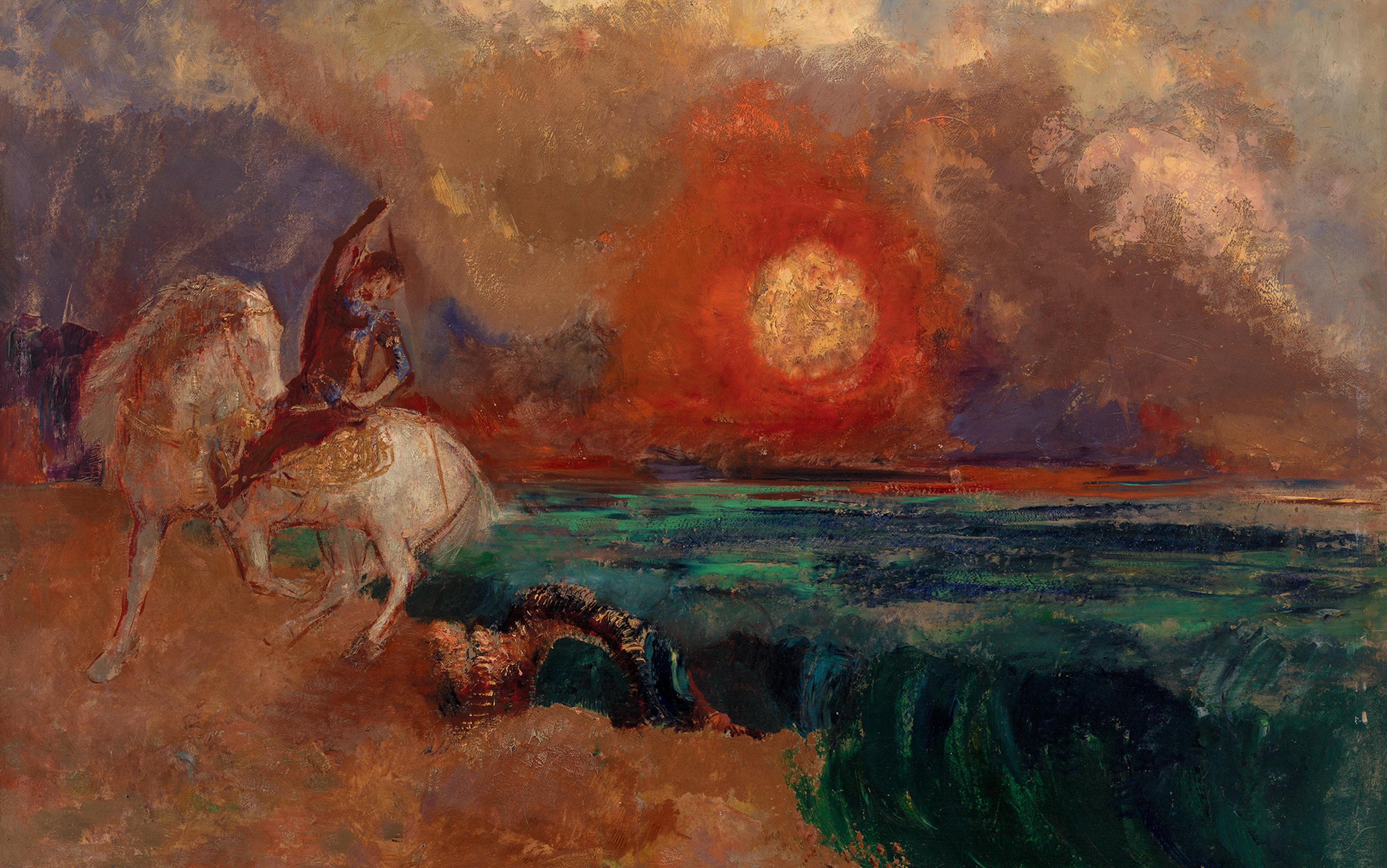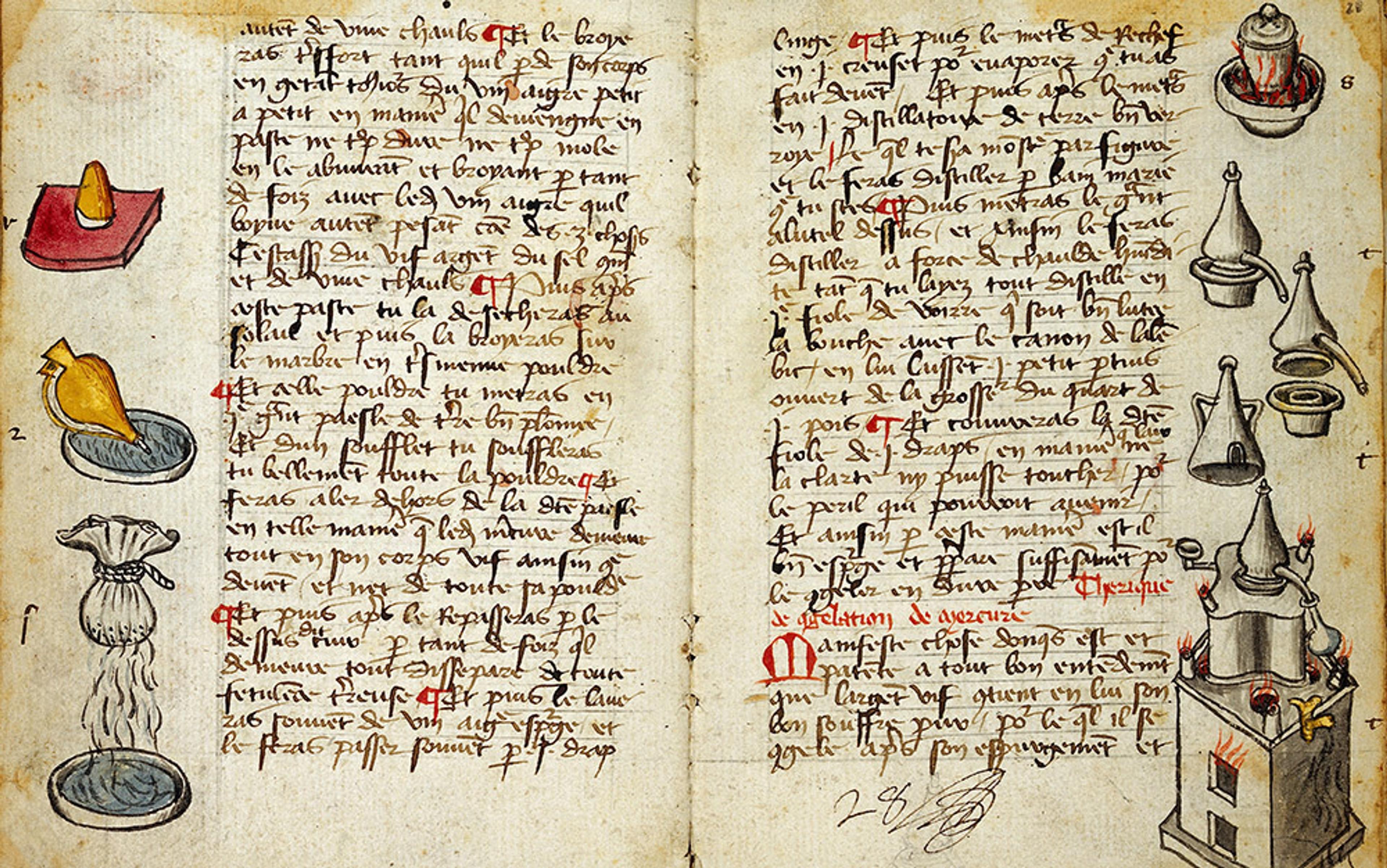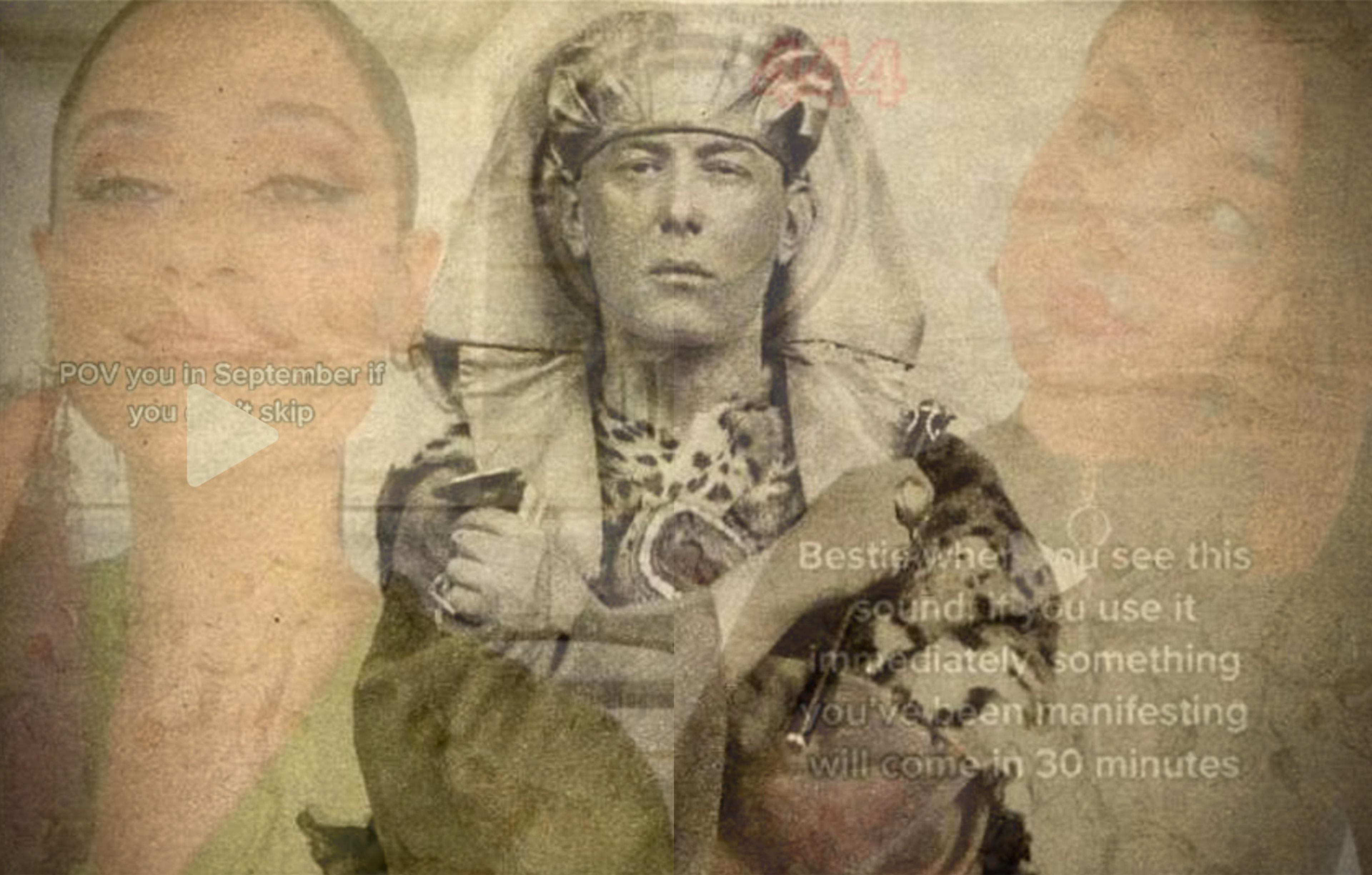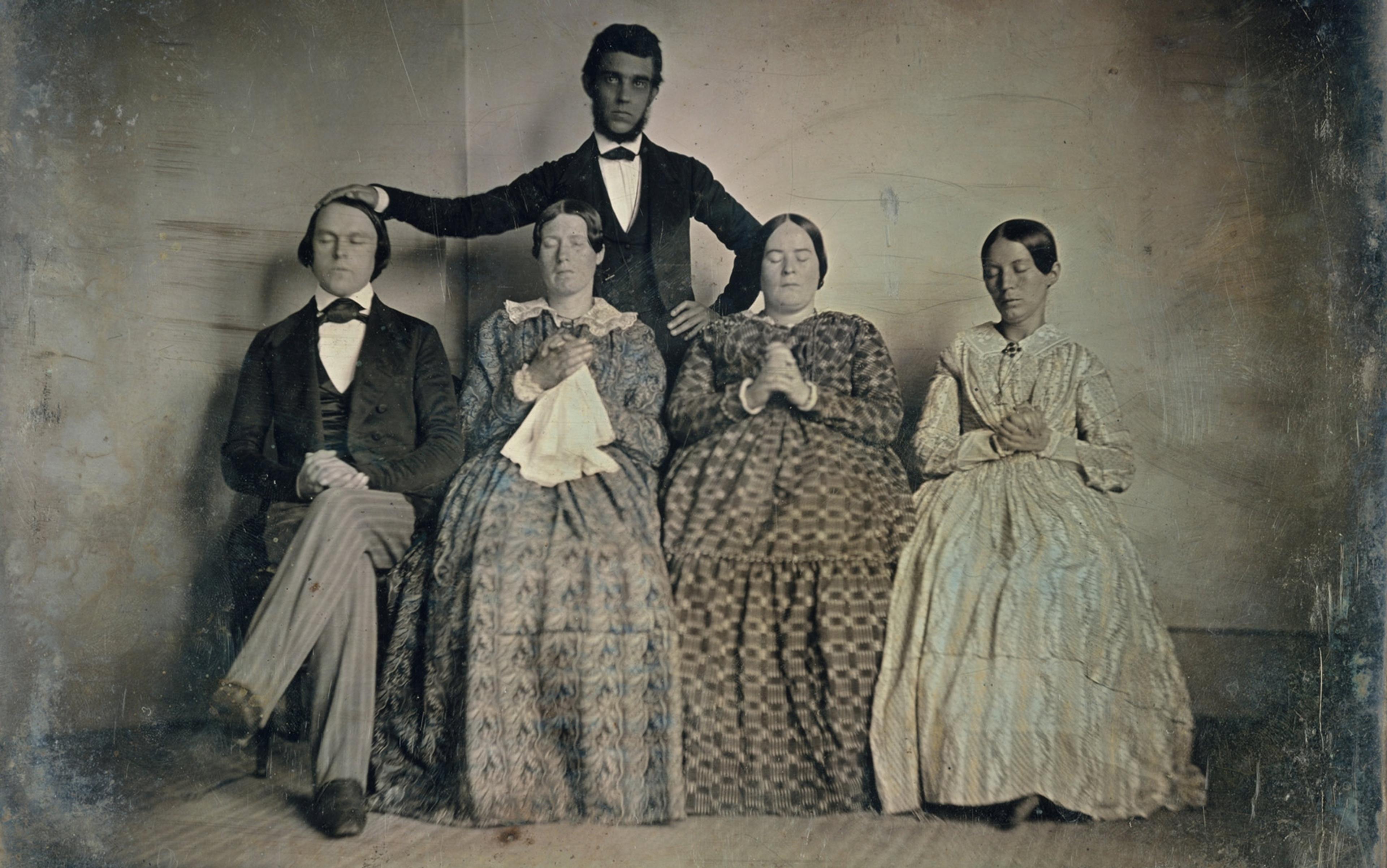Enlightenment’s programme was the disenchantment of the world… The disenchantment of the world means the extirpation of animism… the Enlightenment detected a fear of the demons through whose effigies human beings had tried to influence nature in magic rituals.
Max Horkheimer and Theodor Adorno, Dialectic of Enlightenment (1944)
The past few years have seen a resurgence of interest in the Frankfurt School – a group of German sociologists, philosophers, cultural theorists, psychoanalysts and their students – whose work is now synonymous with critical theory. Most of the initial members of the Frankfurt School came together in the 1920s at the Institute for Social Research in the German city of Frankfurt. Because most of the early members were Jews, many either perished or fled Germany when the Nazis came to power. The cross-fertilisation of critical social science with philosophy was particularly fertile ground. Today, their studies of ‘the Authoritarian Personality’ and Right-wing populism, and their denunciations of the ‘poverty’ of consumer culture, have come to look downright prescient.
Two of the Frankfurt School’s most important members were the philosophers Max Horkheimer (1895-1973) and Theodor Adorno (1903-69). They initially met in 1921 in a seminar on gestalt psychology at the Goethe University in Frankfurt where Adorno was an undergraduate and Horkheimer a PhD student. But their intellectual relationship really blossomed under their shared experiences as German émigrés in the United States during the Second World War years, leading to some of the sustained critiques of late-capitalist society that have made the Frankfurt School famous. As Alex Ross recently put it in The New Yorker: ‘If Adorno were to look upon the cultural landscape of the 21st century, he might take grim satisfaction in seeing his fondest fears realised.’
The single most important work produced by the Frankfurt School was the book that Horkheimer and Adorno co-authored, the monumental Dialectic of Enlightenment (1944, revised 1947), an attempt to diagnose the maladies of modernity by understanding how modernity could have produced the horrors of fascism and Stalinism alike.
To risk a broad overview for the uninitiated, Horkheimer and Adorno construct their text around the unfolding dialectical opposition between ‘enlightenment’ (Aufklärung) and ‘myth’ (Mythos). The roots of this antagonism can be found in a dilemma that could as easily be psychological as historical. Humans, who see nature as outside of ourselves, are presented with a choice: either we can elect to submit to a mysterious, mythological world full of magic and frighteningly capricious spirits; or we can elect to subdue nature. By choosing the second option and turning nature into an object to control, humanity was caught in its own trap. Chasing the domination of nature, humans began to dominate each other. Rather than being liberated into a new kind of autonomy as they had hoped, people were instead turned into objects or, more properly, into abstractions, mere numbers and statistics, leading to a new backlash of irrational forces. As Horkheimer and Adorno summarised it, ‘enlightenment reverts to mythology’. The objectification of nature had directly led toward the objectification of humanity; the concentration camps and Gulag followed.
To make sense of this narrative trajectory, we need to know that, despite a whole crowd of scholars who see themselves as defending the historical Enlightenment from Horkheimer and Adorno’s critique, the Dialectic of Enlightenment portrays ‘enlightenment’ not primarily as a particular historical period, but as an ancient human impulse ‘aimed at liberating human beings from fear and installing them as masters’ over nature. They identify its modern patriarch as the 17th-century empiricist Sir Francis Bacon, evoking the scientific revolution.
The Dialectic of Enlightenment provides an account of the ascendancy of enlightenment explicitly keyed to the ‘disenchantment of the world’, which they suggest first and foremost meant ‘the extirpation of animism’ and the end of belief in magic, spirits and demons. As Horkheimer and Adorno argue, ‘the mind, conquering superstition, [was supposed] to rule over disenchanted nature’. Magic and spirits had to go if the world was to be amenable to systematic and rational interpretation. To be sure, they also described what they saw as a contemporary ‘regression’ to myth and magic in capitalistic commodification and fascist politics as a kind of backlash to enlightenment, but they generally presumed disenchantment as the return’s precondition.
Adorno and Horkheimer are not the only philosophers committed to varieties of disenchantment narratives. The German sociologist Max Weber, while not the first to formulate a version of this grand narrative, was its most influential exponent, and much of the way that disenchantment is talked about in the academy is based on the legacy of Weber’s work. This grand trajectory is often described with reference to his poetic phrase ‘the disenchantment of the world’ (die Entzauberung der Welt) – literally the ‘de-magic-ing’ of the world.
We find versions of disenchantment in a range of theorists from Jürgen Habermas and Jean-Luc Nancy to Charles H Long and Carolyn Merchant, and even the Canadian philosopher Charles Taylor, who summarised it in 2008 thus: ‘Everyone can agree that one of the big differences between us and our ancestors of 500 years ago is that they lived in an “enchanted” world and we do not.’ Indeed, a great many theorists have argued that the defining feature of modernity is that people no longer believe in spirits, myths or magic. Some thinkers celebrate disenchantment while others condemn it, but many agree about its broader historical trajectory. Accordingly, various disenchantment narratives have found significant purchase not just in critical theory but also in diverse projects ranging from Afro-pessimism, ecofeminism, New Materialism, poststructuralisms, neo-enlightenment thought, and even in some forms of communitarian, Marxist and even conservative political theory. It is a narrative that can be found in the work of theorists on all sides of the political spectrum.
But as I argued in my book The Myth of Disenchantment: Magic, Modernity, and the Birth of the Human Sciences (2017), the common notion of disenchantment as an extirpation of animism rests on a mistaken premise. Several large-scale surveys suggest that the vast majority of Americans believe in some sort of paranormal phenomena. Indeed, a surprising 83.3 per cent of Americans believe in either guardian angels, demonic possession or ghosts, and there is evidence for similar belief patterns in western Europe. (I should note that disenchantment should not be confused with secularisation. The sociological evidence suggests that de-Christianisation, while usually equated with secularisation, often correlates with an increase in belief in spirits, ghosts and magic – not the reverse.) Nor are sociological surveys the only evidence. If one views Europe and North America through the same sort of anthropological lens that European and American anthropologists are used to directing abroad, it seems hard to defend the notion that the ‘modern West’ is straightforwardly disenchanted. There are plenty of examples.
Walmart sells ‘Sage Spirit-Smudge Wands’ and clothing chains such as Urban Outfitters sell ‘healing crystals’ and tarot cards. You can go on eBay right now and pay an Australian ‘white witch’ to perform a ritual to summon a djinn and bind it to an object of your choice. Celebrities such as Anna Nicole Smith and Bobby Brown have publicly described having sex with ghosts. Coffee shops and co-ops throughout the US and much of western Europe display flyers advertising ‘palm readers’, ‘energy balancing’ and ‘chakra work’. Even if you ignore the Harry Potter craze and other fictionalised depictions of wizards, ghosts and witches, studies of American reading habits suggest that ‘New Age’ print culture is incredibly lucrative, with ‘non-fiction books’ about magic, guardian angels and near-death experiences frequently appearing in the upper echelons of Amazon’s bestseller lists. And the past 15 years have seen a proliferation of ‘reality’ television series that claim to report evidence for ghosts, psychics, extraterrestrials, monsters, curses and even miracles. At the very least, it would seem that contemporary consumers are willing to flirt with the existence of spirits and psychical powers.
Inventing ‘the Enlightenment’ involved imagining a totally fictitious and irrational Dark Ages
These beliefs are not the result of new fads. Many contemporary pundits have imagined that we have entered a ‘post-truth’ age. For example, in ‘How America Lost Its Mind’ (2017) in The Atlantic, Kurt Andersen portrayed the 1960s as a watershed for the ‘irrational’ and the New Age, both of which he interpreted as particularly American. But there is no period in the historical record when people were more ‘attached to reality’. To be clear, I’m not describing stasis, nor do I think that these are perennial beliefs surviving from ancient times. But if the 1960s and ’70s saw the rise of the New Age, the ’90s the mainstreaming of the paranormal, the 2000s a series of well-publicised spiritual revivals, and the present an occult boom connected to the alt-Right and meme magic alongside a growing Wiccanism, one could also look to the 19th century and associate it with a host of parallel moments: the 1840s and spiritualism, the 1870s and theosophy, the 1890s and the fin-de-siècle occult movement, and so on. Enchantment is part of a contiguous cycle in which one movement supersedes another. There are disenchanting movements, but enchantment itself never fully ‘vanishes’.
Another error behind the notion of disenchantment goes in the other direction. There has been a strong tendency to examine the present in contrast with an exaggerated ‘other’. One of the ways that various narratives of disenchantment are staged is by presenting contemporary Euro-American thought as if it is in some way radically different to that of ‘primitive’ people or even medieval Europeans. This construction leads to two sorts of exaggerations: it tends to overstate the rationality of the contemporary industrialised world, and it also overstates the irrationality or ‘faith’ of people in other times and places. For example, part of inventing a notion of ‘the Enlightenment’ as a radical break involved imagining a totally fictitious and irrational Dark Ages – a notion that we have inherited. Indeed, most non-specialists falsely believe that medieval Christians thought that the Earth was flat, frequently burnt witches, and were otherwise backward, irrational and superstitious. But this notion of the Dark Ages was invented by 18th- and 19th-century figures, and then projected into the past. If you look through the historical archive, you can find skeptics and believers in virtually all epochs. To be clear, I am not saying that they occur in the same ratio as they do today, but it would be a mistake to imagine the previous peoples as wholly irrational.
Furthermore, the widely repeated claim that modern science necessarily produces disenchantment is equally a mistake. It fails on a philosophical level because it has been impossible to successfully and fully demarcate ‘science’ from other domains. As Larry Laudan, the greatest living philosopher of science, has shown, ‘there are no epistemic features which all and only the disciplines we accept as “scientific” share in common’ and, moreover there is no unitary scientific method. Thus, the line between science and pseudoscience is harder to maintain a priori than most of us would like. Space prohibits a full elaboration, but suffice it to say that, without a scientific mode of rationality or monolithic method, it is impossible to claim that ‘science’ as a whole is necessarily disenchanting.
About 100 years before Horkheimer and Adorno put pen to paper to produce the Dialectic of Enlightenment, a pair of amateur German folklorists, Adalbert Kuhn and Friedrich Leberecht Wilhelm Schwartz, wandered through pre-unification Germany recording various local folktales, legends and beliefs. The volumes that resulted from their 10-year effort (1839-49) are a treasure trove of local knowledge and miscellany. They recorded everything from the details of folk cures and village festivals to legends about dragons, cursed castles, witches and monsters. But for our purposes, the most interesting fragment in Kuhn and Schwartz’s Norddeutsche Sagen, Märchen und Gebräuche (‘North German Sayings, Fairy Tales and Customs’) is this:
Now there is no more magic (Zauberei) or witchcraft (Hexerei). This is because the Sixth and Seventh Books of Moses cannot be used any longer. It was these books that meticulously inscribed and recorded all witchcraft, magic and incantations. These two books are sealed in Wittenberg and they are exhibited as curiosities, but cannot be borrowed.
Magic – which once ruled the land – is gone. The true spell-books are imprisoned in Wittenberg, a city famous for its connection to Martin Luther and the Reformation. The basic structure of this folktale is not unique. We often associate folktales with enchantment. They often recount stories of fairies or witches or sorcerous curses. But there are also tales like the one above that depict disenchantment.
The structure of the folktale is relevant because many of us working in philosophy or the social sciences have inherited what amounts to a version of this folktale with a twist – disenchantment without the corresponding enchantment. Let me explain.
For more than 1,000 years, spell-books (such as the Sixth and Seventh Books of Moses) often claimed to have recovered lost magical arts. The distance of the present from their putative source was part of what gave these books their rhetorical power. Many tales also began from the premise that, once upon a time, ‘magic was a mighty force in the world, but not anymore’, only to then stage some version of magic’s return. Centuries before sociologists and anthropologists theorised the disenchantment or de-spiritualisation of the world, there were folktales and legends about the departure of the fairies or the vanishing of magic. The gods, spirits or fairies have been disappearing since at least Geoffrey Chaucer’s The Tale of the Wyf of Bathe (c1380-1400) – and arguably since Plutarch – and have been reappearing or being recovered for just as long, sometimes in the space of the same source. These sources almost never denied the existence of either magic or spirits, but rather noted that they had become hard to find or that magic was now largely lost. Folkloric disenchantment therefore preserved enchantment even as it explained its seeming absence.
Far from having evaporated, ‘folkloric disenchantment’ is still common today in the writings of self-described magicians, shamans and witches. But we also find its analogue in academic disciplines. In this academic version of the myth, nostalgia for vanished magic has been replaced by the idea that a scientific worldview has stepped in to replace more primitive folk-belief systems.
As the fragment collected by Kuhn and Schwartz shows us, folktales about disenchantment were present in Germany before Weber was born a few hundred miles to the south of where the tale was collected. But more importantly, the disenchantment narratives were being promoted by self-avowed magicians and neo-pagans – and not just any old neo-pagans, but a specific group of thinkers who were well-known to Weber, as well as to Adorno and Horkheimer: the Cosmic Circle. Indeed, the surprise is that we can see some of the intellectual origins of Dialectic of Enlightenment itself in the writings of this occult movement.
Weber observed ‘the peculiar contraction and repression of natural life-impulses’ brought about by rationalisation
The Cosmic Circle (Kosmikerkreis, Kosmische Runde, or Kosmiker) was a Munich-based group of poets and neo-pagans led by Alfred Schuler (1865-1923), a charismatic figure who claimed to be the reincarnation of a pre-Christian Roman leader, and the recipient of clairvoyant visions and direct communications from pagan gods. The Cosmic Circle also included the German-Jewish poet and translator Karl Wolfskehl (1869-1948), the neo-pagan philosopher Ludwig Klages (1872-1956), and for a time was associated with the mystical poet Stefan George (1868-1933). In many respects, the Cosmic Circle resembled other period occult movements. Crucially, they had their own accounts of magic and disenchantment. As Klages summarised it: ‘Magic is the practice of our philosophy and our philosophy is the theory of magic.’ And yet Klages put forth his own theory about how magic had been lost.
In a set of essays and lectures that begin in 1913 with Mensch und Erde (‘Man and Earth’), Klages provided an early version of his disenchantment or rationalisation narrative. In his account, the ancients knew the Earth to be a ‘living being’ and that ‘Forest and spring, boulder and grotto were filled with sacred life; from the summits of their lofty mountains blew the storm-winds of the gods.’ Primitive humans were, compared with Klages’s contemporaries, in closer harmony with nature, which they sought to propitiate or protect by way of ritual and various prohibitions. Nevertheless, Christianity suppressed the old gods, and nature was stripped bare of animating forces. Modern Europeans, he went on to argue, saw the Earth as nothing but ‘an unfeeling lump of “dead matter”’. In his critique of modernity elsewhere, Klages occasionally deployed the very terminology that Weber would make famous – not just ‘Entzauberung’ but even the expression ‘the disenchantment of the world’ (die Entzauberung der Welt).
This was no coincidence. The Cosmic Circle turns out to have been connected to both Weber and to members of the Frankfurt School. While it is unclear if he ever met Schuler, Weber definitely knew Wolfskehl, George and Klages. There is evidence that George had a significant impact on Weber’s notion of both mysticism and charisma. Weber had his handwriting analysed by Klages and likely met him. But even more importantly, he read Klages’s work and cited him on several occasions. Weber observed, for example, that Klages’s writings contained ‘very good remarks’ on ‘the peculiar contraction and repression of natural life-impulses’ brought about by rationalisation.
The connection between the Cosmic Circle and the Frankfurt School was also important. The figure associated with both was Walter Benjamin. Benjamin was friends with Wolfskehl and even wrote a dedication to him for his 60th birthday. In his letters to the philosopher and historian Gershom Scholem (1897-1982), Benjamin mentions tracking down and reading fragments of Schuler’s work. Finally, Benjamin admitted that his distinctive prose style was inspired by George’s Denkbild (thought-images); and indeed, the influence of George on Benjamin’s work was sufficiently pronounced that Adorno mentioned (and apologised for) it in the introduction to Benjamin’s correspondence. Not only did Benjamin read Klages and meet him in person, but he moved to Munich intending to study with him, and they kept up a lifelong correspondence. Benjamin described Klages’s magnum opus as ‘a great philosophical work’.
But this wasn’t Benjamin’s only connection to esotericism. Scholars of Benjamin have often commented on his interest in ‘Jewish Mysticism’ and the Kabbalah. He read widely in occult, neo-pagan and theosophical works and, in addition to the Cosmic Circle, he socialised with two different groups of Jewish mystics. Indeed, much of the terminology that seems so peculiar to Benjamin – the aura, constellations, correspondences, angels and Ur-images – were all current lingo in the European esoteric circles in which Benjamin was coming to with his most important ideas. To be clear, Benjamin did repurpose these terms in provocative and useful ways. But the line of influence is there.
The official members of the Frankfurt School also had connections to esotericism. As a young man, Adorno adapted George’s poems into a piano composition and was subsequently mistaken for one of George’s followers. While he frequently condemned George’s politics, Adorno was fascinated by George throughout his life. He wrote critical works dedicated to George in 1934 and 1939-40, set George again to music in the 1940s, and in 1967 performed a radio piece called ‘George’. Adorno also occasionally referred to Wolfskehl and Schuler in print, albeit critically.
But his engagement with Klages was even more significant. Klages is cited on several occasions in Adorno’s oeuvre. Most importantly, however, there are references to Klages in the footnotes of Dialectic of Enlightenment. Horkheimer and Adorno state in a note that ‘Klages [and company] recognised the nameless stupidity which is the result of progress. But they drew the wrong conclusion… The rejection of mechanisation became an embellishment of industrial mass culture.’ In other words, Klages and his fellows understood the problem with enlightenment, but their solution was wrong and fell prey to commercialisation.
That said, Adorno was not generally positive about Klages or the occult more broadly. In fact, Adorno’s critique of the occult was almost as influential as his critique of disenchantment. The problem was that re-enchantment had become commercialised, leading to everything from homeopathy to astrology. Although esotericism covers the political spectrum both Left and Right, Adorno associated belief in the occult with fascism and capitalist exploitation. It would seem that Klages and the occultists were right to identify disenchantment as a problem, but their attempt to resupply the missing magic was doomed to failure insofar as it was trapped within the horizon of capitalism and irrationalism.
My point is not that the Frankfurt School takes its disenchantment narrative from occult circles but rather that it shares it with them. However, Adorno’s immanent critique of enchantment poses a problem for the self-understanding of critical theory today. As noted above, critical theory is one of the central places in the academy for a Left-Weberian critique of modernity. We look to critical theorists to be reminded that disenchantment has meant the domination of nature, the de-humanisation of humanity, the end of wonder, and the destruction of myth. But having looked at Klages and much earlier folkloric materials, we can see that important aspects of this line of critique were important to the occult milieu before much of the disenchantment we are discussing was supposed to have occurred. On these grounds, all the various attempts to overcome contemporary alienation by way of re-enchantment now seem suspect.
The opposition, even dialectically, between enlightenment and myth is rooted in a false foundation
If the main thing we have learned from critical theory – and the Dialectic of Enlightenment in particular – is that disenchantment has negative consequences, then we are presented with a further problem. It would seem that in his rejection of occultism, Adorno has placed himself on the side of the disenchanters. He attacks both magic and the loss of magic. Hence, Adorno and company are a source of our unease with disenchantment and are also a source of disenchantment. They might therefore seem to be amplifying the very disenchantment they have so strongly criticised.
I see myself as a disciple of critical theory, and I find the Dialectic of Enlightenment extremely useful and have returned to it repeatedly, but to the degree it turns on disenchantment and the opposition, even dialectically, between enlightenment and myth, it is rooted in a false foundation. What Horkheimer and Adorno got right is that these two seeming opposites taken to the extreme ultimately converge. But one thing the great dialecticians missed is that enchantment and disenchantment, myth and enlightenment, are not truly opposing conceptions in need of higher dialectical reconciliation. Any historian with an eye to such things can discover a multitude of hybrids – disenchanting magicians, rational myths, enchanted sciences, mythic enlightenments, sciences of religion and religions of science. I do not want to fault Adorno and company for the very dialectical turns that make the movement so appealing (even as they make the theory nearly impossible to falsify), but merely to show the problems resulting from taking enchantment and enlightenment to be opposed.
It is possible to critique both the concepts of enchantment and disenchantment. But even if you grant their utility as broad descriptors of social attitudes, to position them in redemptive opposition (on either side) would be a grand error. To present the first as an emancipatory possibility, as so many have done, would be to describe enchantment as resistance ‘against the tide of modernity’. This would be to presume that disenchantment has already happened and to suggest that reawakening a sense of wonder, reviving universal ethics or restoring belief in magic or animate nature would be the route to overcoming the depersonalising structures of modern domination. By contrast, to promote enlightenment is often to emphasise the importance of political liberalism, technological progress, and focus on stripping away of illusions.
But neither being a magician or a disenchanter is necessarily redemptive. Power – both liberating and dominating, potentia and potestas – can be actualised by way of enchantment or disenchantment. Hegemonic ideologies cloak themselves in both. There have been both empires of reason and empires of magic. There have been attempts to justify genocides as promoting or attacking enlightenment or as promoting or attacking myth. Thinking in terms of myth – and, further, pursuing it; making a programme of either re-enchantment or mythopoesis – is distorting. And yet thinking in terms of disenchantment – pursuing it, fetishising the real, and aggressively demythologising – is also distorting. Neither enchantment nor disenchantment on their own can be emancipatory.






